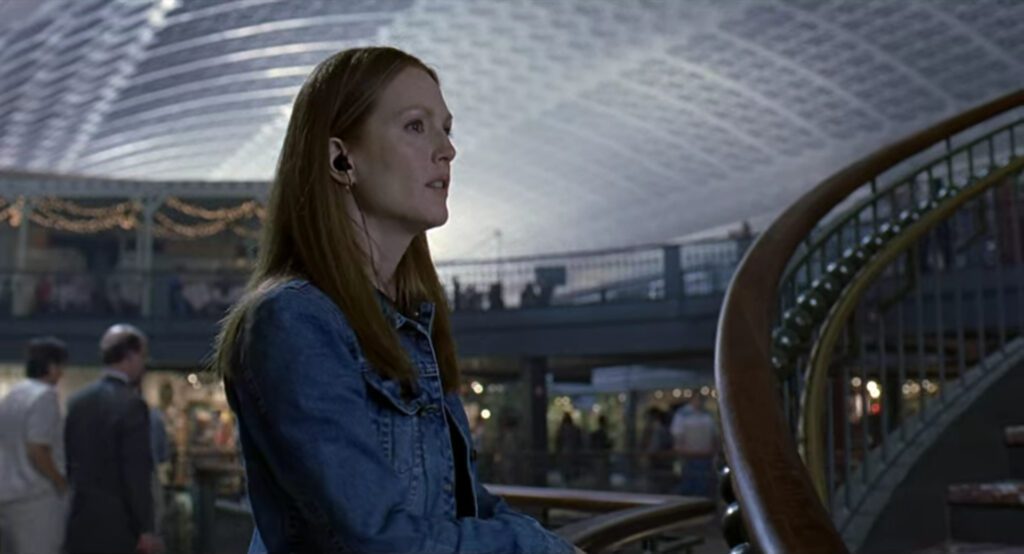
Hannibal
2001, directed by Ridley Scott
The reputation of Hannibal rests on a few brief moments and images so revolting that they discourage most viewers from taking the movie seriously. Even audiences who welcome disturbing content may be put off, either because they’re comparing it to The Silence of the Lambs which lavishes much more fascination on Hannibal Lecter, or because Hannibal doesn’t cater to a moral sensibility that wishes to identify and avenge evil. Unlike so many movies that exploit crime for its dramatic value, Hannibal confronts us with the horror that results from exploiting crime. If only we can find our way to the humanity in such a seemingly brutal film, we will discover in it a strangely prescient warning that should have been heeded when the movie came out.
The opening scene, where billionaire Mason Verger buys relics of Hannibal Lecter on the black market, tells us that the movie will be about the fetishization of crime. Instead of thinking of Hannibal as a sequel to The Silence of the Lambs, it would be more accurate to call it a rebuke to a movie that makes a serial killer larger than life, thereby glamorizing him. If we look at Hannibal Lecter without the romantic filter of sensationalism, we can see him for what he is, merely an intelligent psychopath. Portraying him matter-of-factly puts aside questions of good and evil in favor of more constructive questions. How can society deal with persons whom nature deprives of the capacity for sympathy? The answer, of course, is quite the opposite of the bad examples we’ve already seen. We should not fetishize their crimes like Mason Verger does, nor treat them as demi-gods like so many crime movies do.
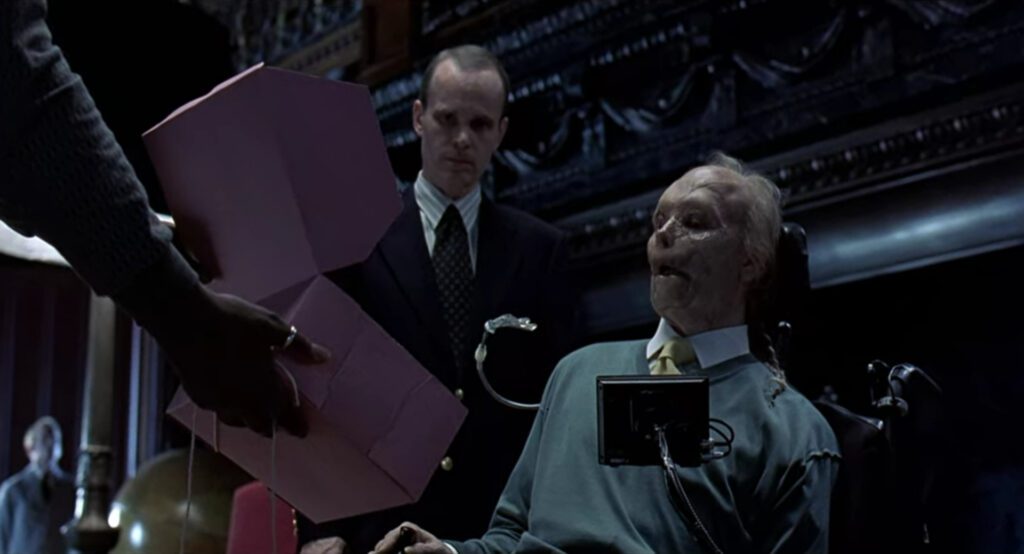
Though Hannibal Lecter gives the movie its title, there are plenty of villains more worthy of our attention, at least for their instructive value. It’s pointless to weigh the crimes of Mason Verger, Paul Krendler, Inspector Pazzi, Barney, the Swiss bankers, or the Italian kidnappers against those of Dr. Lecter, because they are presumably not psychopaths, whereas he is. Verger may be sadistic, but his sadism grows from an unhealthy obsession with the man he blames for his disfigurement. The rest of them try to profit off of Lecter’s crimes. Barney tells FBI agent Clarice Starling, “I’m not a bad guy,” and in many ways he’s not; he’s only supplementing his modest income by selling Lecter’s relics. Krendler acts like the kind of bad guy we might encounter every day, but he cannot resist half a million dollars from Verger. Pazzi is sympathetic but weak, betraying his duties for an illegal bounty. All of these secondary villains are corrupt, but Lecter was born the way he is and cannot be reformed.
To describe Hannibal Lecter as “evil” is a sign of impotence, of frustration with the fact that he cannot be changed. Worse, casting him in moral terms fuels a widespread obsession that encourages him, corrupts almost everyone else, and interferes with impartial justice. Clarice is the only character who understands him, and she also understands that her battle is against those who fetishize his crimes and profit from the harm he does. She alone resists corruption. When Guinness World Records cites her as the FBI agent with the most kills, her irritation separates her from so many who would embrace the distinction. The other characters form a whole cottage industry feeding off of Lecter, a kind of side economy that permeates government, finance, law enforcement, and other sectors of society. However incredible the movie’s story may be, its characters stand for real forces shaping our world.
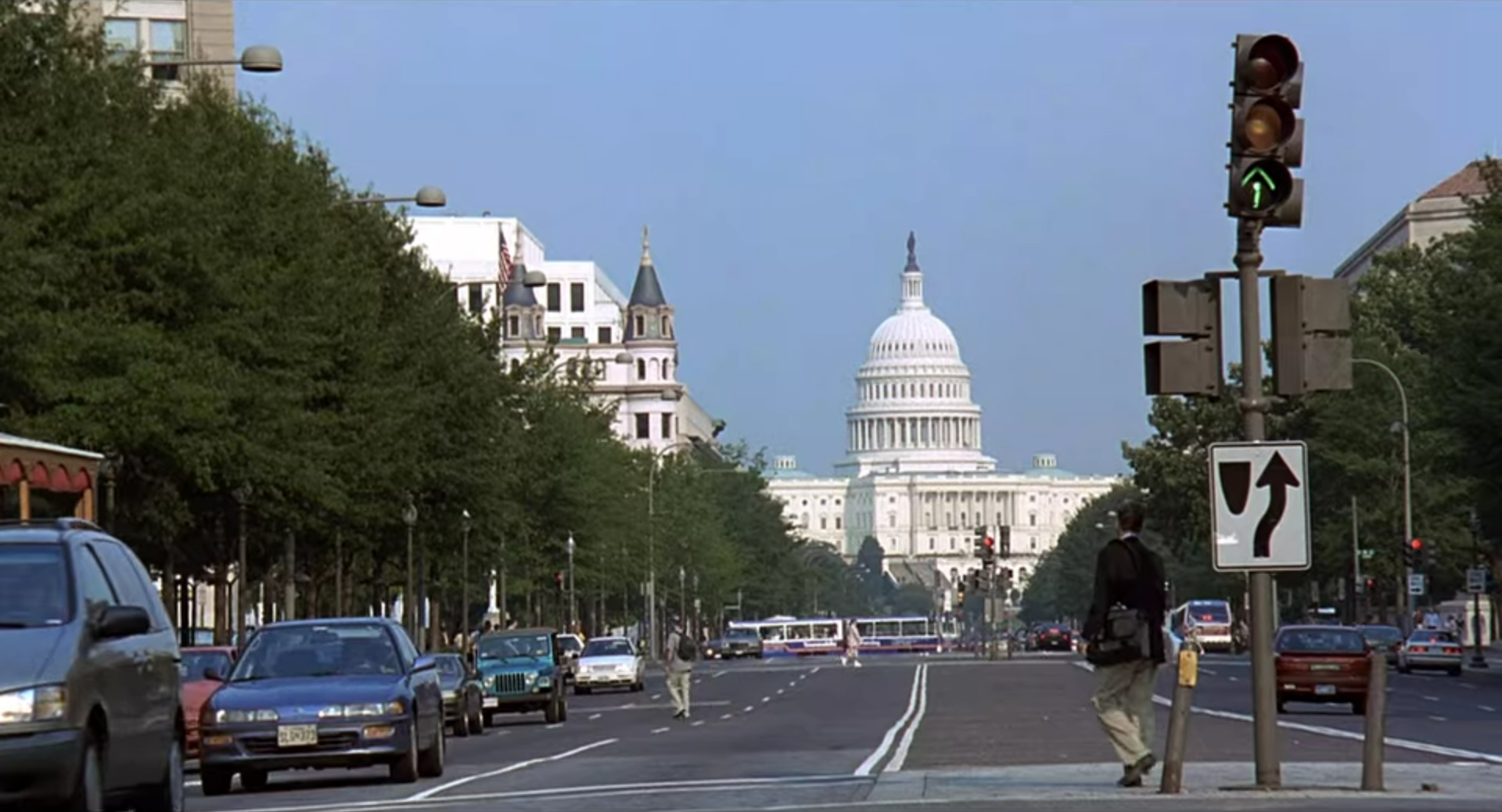

The action in Hannibal revolves around two cities, Washington, DC and Florence, whose symbolism is hardly neutral. Florence is the birthplace of the Renaissance, and in that sense the cradle of the modern world. The Renaissance was certainly a flowering of the arts, but it was built on a flowering of commerce under fantastically wealthy Florentine families like the House of Medici. After Pazzi goes to Geneva to view the bounty, an otherwise extraneous shot of a money counting machine dissolves into a gorgeous panorama of Florence, reminding us of the city’s history as a seat of wealth. Florence also gives Dr. Lecter occasion to lecture on Dante, particularly the link between Pazzi’s ancestors and the sin of avarice.
Signs of avarice are never far away in Hannibal. It motivates nearly every character besides Clarice and Dr. Lecter. The hungry man-eating boars are symbols of greed, and pigs also appear on Verger’s wall and a Florence street fountain. Cannibalism too is a metaphor for greed, and Lecter’s trademark perversion holds a mirror to the avarice swarming around him, looking to take advantage of his crimes. Money itself makes numerous appearances: the bounty in Geneva, the coins of Judas, Pazzi jangling his change by the pay phone, Verger demanding that Krendler speak of money “with the respect it deserves”. We’re reminded that when Lecter had tried to corrupt Starling he spoke of “quid pro quo”, but now when she offers a “trade” he compares that word to “a greasy coin”. Verger, just like Tyrell in Ridley Scott’s Blade Runner, is so consumed with greed that he follows a stream of financial reports even while lying in bed.
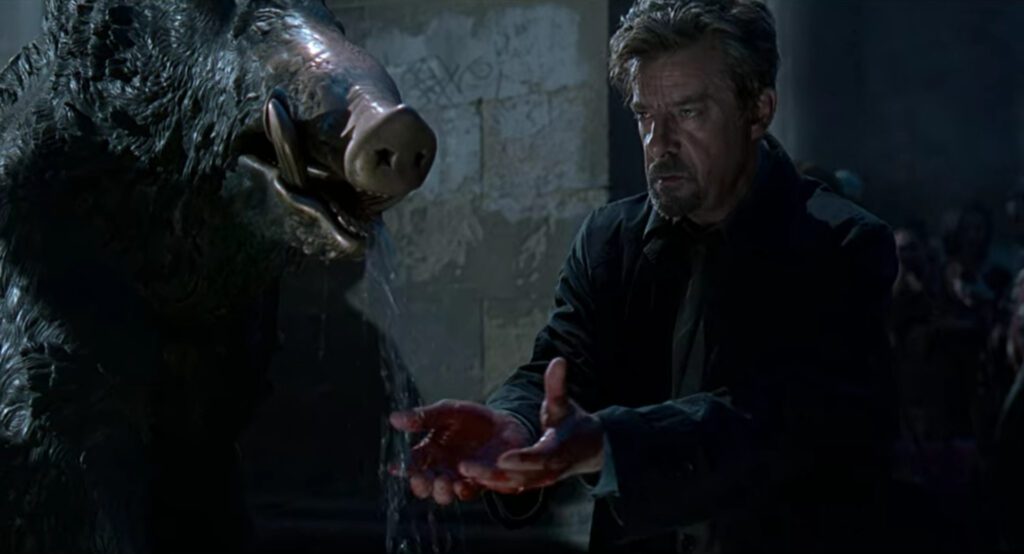
People like Hannibal Lecter will always be with us, but the harm they can do is minimized as long as society recognizes them and refrains from elevating them, fetishizing them, or yielding in advance to their destructive impulses. In the end Hannibal goes free only because society’s fascination with crime lowers its defenses against him. Many psychopaths wind up behind bars, but the more intelligent ones often reach positions of power and influence. The institutions we trust and rely on – the FBI and police, government, finance, media, and so on – are weakened by a perverse attraction to seductive criminals, largely motivated by greed. Mason Verger’s deformed face is a metaphor for the face of avarice which gives psychopaths the oxygen they need to operate. Just as Lecter had seduced Verger with charm and drugs, coaxing him to cut off his own face, powerful psychopaths seduce many among us, appealing to avarice and making society ugly. Even Cordell, who had hoped to avoid the gruesome scene with the pigs, is easily tempted by a free taste of crime: “Why don’t you push him in? You can always say it was me.” Society is so conditioned to respect powerful psychopaths that it easily bends to their will.
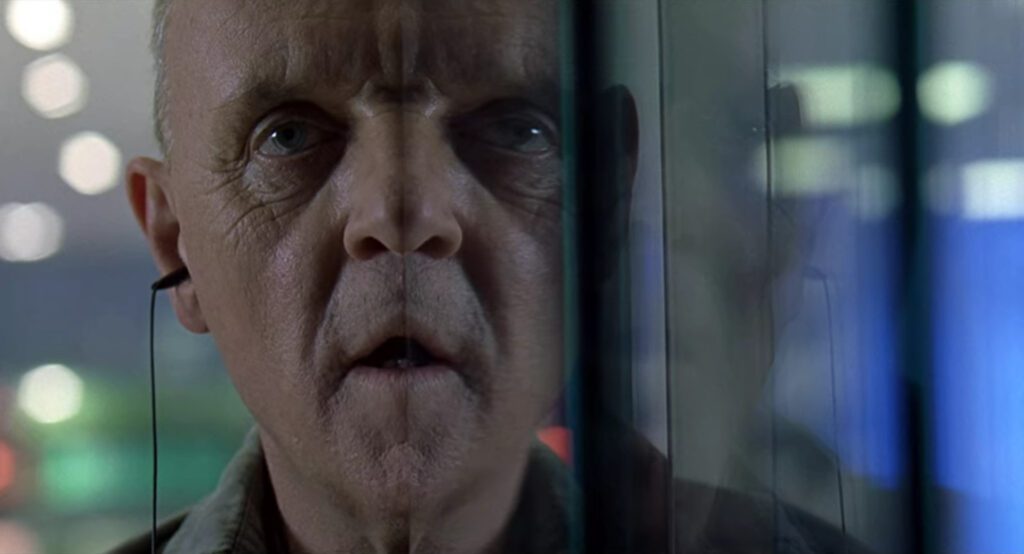
Once the psychopath achieves power and legitimacy, enabled by the avaricious, he will no longer rely on the support of a few corrupt individuals. He will seek to corrupt everyone. At the end, flying off on an airplane, Hannibal takes delight in corrupting a child, giving a curious boy a taste of the human brains he has packed in his lunchbox. The brain, like so much in this movie, has a metaphoric value as well – just as Lecter lifts the top of Krendler’s skull to reveal his brain inside, Hannibal shows us what’s inside the minds of the corruptible people who give psychopaths their power.
Florence of course stands for art as well as commerce, and the arts too are vulnerable to corruption by the cult of the psychopath. Since the 1970s the number of movies that make psychopathic gangsters and criminals into oversized personalities has grown. Many of them pretend to critique the world of organized crime, but their influence indicates a less innocent purpose. The net effect of movies like The Godfather and Goodfellas has been to encourage a fascination with mobsters that translates into a tolerance of their presence in business and government.
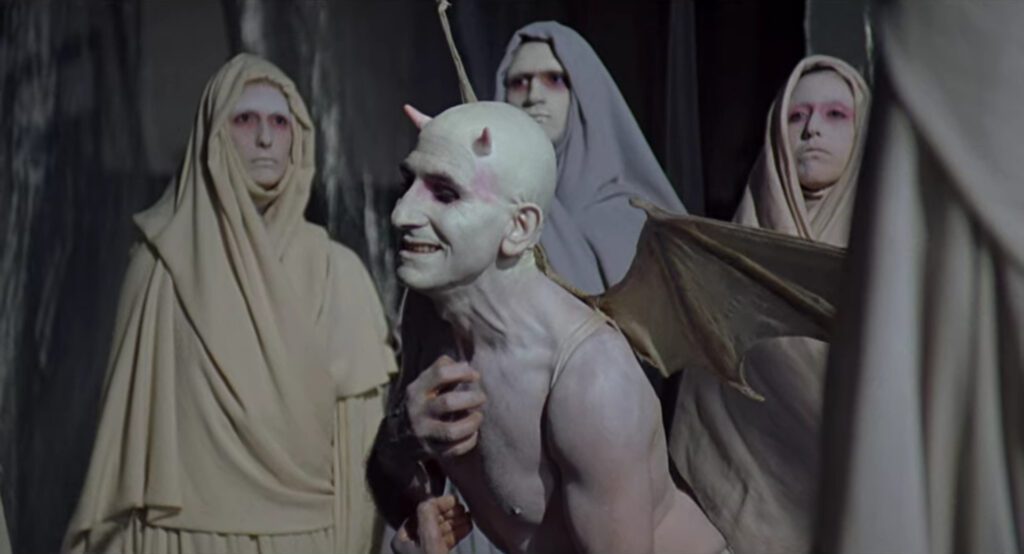
Besides Florence, Hannibal also makes much of its setting in and around Washington, DC. The United States is by no means the only country where a reverence for crime has corrupted the institutions of civilization, but the U.S.A.’s disproportionate world influence makes its corruption matter a great deal. If Starling had managed to arrest Lecter it would have been a triumph for the rule of law, but instead, at Union Station just outside the United States Capitol, he is kidnapped by other criminals, treated like some kind of valuable treasure. For this to happen where it does is devastating to the image of the rule of law. Starling will try again to apprehend Lecter, using a paperweight of the U.S. Capitol, but it’s too late; she’s been hamstrung by her own bureau and drugged by Lecter. To cap it off, the movie times its climax and Lecter’s escape on the Fourth of July, with a display of fireworks across the lake as Lecter goes free. The irony of this occurring in the United States on its national holiday is a comment on how much the worship of criminals has weakened a powerful nation.
The argument in Hannibal should be easier to see today, after its warning has proved uncannily accurate. Twelve years later Ridley Scott would repeat his warning about our weakness for psychopathic criminals, telling us almost explicitly that The Counselor was a “cautionary” tale, but it was not enough to dissuade Americans from electing to their highest office a psychopath, a known criminal whose power was supported precisely by the forces of avarice identified in Hannibal – forces that, like Mason Verger, are quick to identify themselves with born-again Christianity. In 2001 it was too much to imagine that the Capitol building itself would be attacked twenty years later by Americans seduced by a psychopath, but Ridley Scott’s movie came frighteningly close to predicting it.
CONNECTIONS:
Strangers on a Train – Use of Washington DC, the Capitol, and Union Station to indicate social corruption near the center of power in the U.S.A.
Les bonnes femmes – Fetishization of crime
Blade Runner – Tyrell and Verger lie in bed trading stocks or following financial reports
The Counselor – Argument about society’s response to psychopaths and the courage needed to minimize their harm